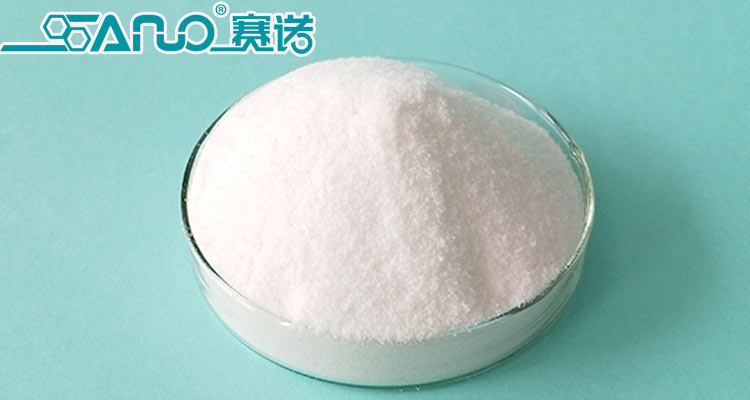In the formulation of profile, the lubricant used is different due to different stable systems. In the lead salt stabilization system, stearic acid, glyceryl stearate and polyethylene wax can be selected as lubricants; in the non-toxic calcium zinc composite stabilization system and rare earth composite stabilization system, stearic acid, butyl stearate, paraffin, pe wax and calcium stearate can be selected as lubricants; in the organic tin formula, calcium stearate, paraffin, oxidized polyethylene wax can be selected as lubricants. The main properties of common lubricants are as follows:

(1) Calcium stearate
White powder, melting point 148-155 ℃, non-toxic, excellent lubricity and processability, no sulfide pollution, used together with basic lead salt and lead soap, can improve the gel speed, and the dosage is generally 0.1-0.4PHR.
(2) Polyethylene wax
White powder, softening point is about 100-117 ℃. Due to its relatively high molecular weight, high melting point and low volatility, it also shows obvious lubricating effect at higher temperature and shear rate. It is suitable for rigid PVC single and twin screw extrusion, with the common amount of 0.1-0.5PHR.
(3) Oxidized polyethylene wax
White or yellowish powder or particle, oxidized polyethylene wax is still incompatible with PVC, although it contains a small amount of polar groups, but the lubrication efficiency is high, which can improve the lubrication between polymer and metal, improve the extrusion efficiency, improve the dispersion of colorants, and give products good transparency and luster. Dosage 0.1-0.5PHR.

(4) Stearic acid
White or yellowish particles, melting point 70-71 ℃. It volatilizes slowly at 90-100 ℃. It is used as an external lubricant in the processing of hard PVC. The amount is generally 0.2-0.5PHR, and it has the effect of preventing chromatography scaling, but it is easy to spray frost if the amount is too large.
(5) Paraffin wax
Melting point 57-63 ℃, without polar groups, is a typical external lubricant. Because of its low melting point, easy evaporation, and low melt viscosity, it can only play a lubricating role in a narrow range. It is suitable for extrusion by single and twin screw extruders, with a general dosage of 0.1-0.8PHR. This product has poor transparency and is easy to turn white.
In practice, it is found that when two or more lubricants are used together, they have different effects than when they are used alone. In the formulation of profile materials, most of them are mixed. The matching system and characteristics of common lubricants are summarized as follows:
(1) Calcium stearate – Paraffin (polyethylene wax) lubrication system
The use of calcium stearate alone in the formula can accelerate the plasticization, improve the melt viscosity, increase the torque, and have a certain demoulding effect. The use of paraffin alone shows delayed plasticization, reduced torque, and no demoulding effect. When calcium stearate and paraffin wax (polyethylene wax) are mixed in a certain proportion, it shows a good effect, and the torque value of the material can be reduced a lot. This is because paraffin penetrates into the calcium stearate molecules, strengthening the lubrication, showing a strong synergistic effect, and improving the dispersion of the lubricant.

(2) Stearic acid – Paraffin (polyethylene wax) lubricating system
The mechanism is the same as that of calcium stearate – Paraffin (polyethylene wax) system, which can improve the thermal stability of the formula, reduce shrinkage, improve fluidity, and facilitate demoulding.
(3) Oxidized polyethylene wax – esters – calcium stearate
When polyethylene wax, ester and calcium stearate are used together, the plasticizing time is obviously prolonged with the increase of polyethylene wax amount, while when oxidized polyethylene wax, paraffin wax, ester and calcium stearate are used together, the plasticizing time is increased first and then decreased with the increase of oxidized polyethylene wax amount, showing an obvious synergistic effect.
In conclusion, when studying the PVC profile formula, it is necessary to understand not only the characteristics and functions of each lubricant, but also the synergistic effect between them. In addition, the PVC profile formula needs to be adjusted and changed according to the differences in processing equipment and molds.
If you want the suitable lubricant, come to Qingdao Sainuo!
Qingdao Sainuo Chemical Co.,Ltd. We are manufacturer for PE wax, PP wax, OPE wax, EVA wax, PEMA, EBS, Zinc/Calcium Stearate…. Our products have passed the REACH, ROHS, PAHS, FDA testing.
Sainuo rest assured wax, welcome your inquiry!
E-mail:sales@qdsainuo.com
sales1@qdsainuo.com
Adress:Room 2702,Block B, Suning Building, Jingkou Road, Licang District, Qingdao,China
Post time: Dec-27-2022
